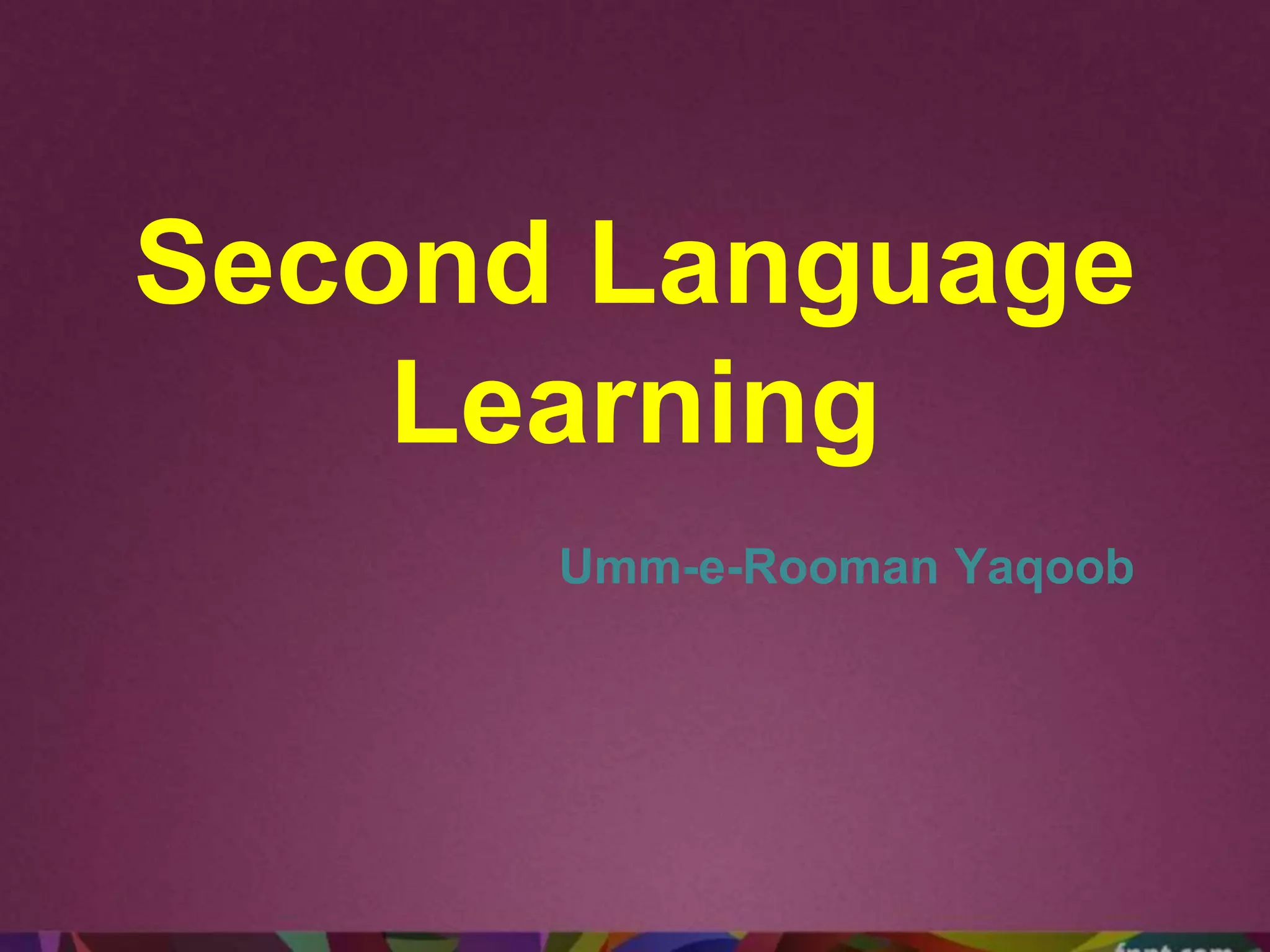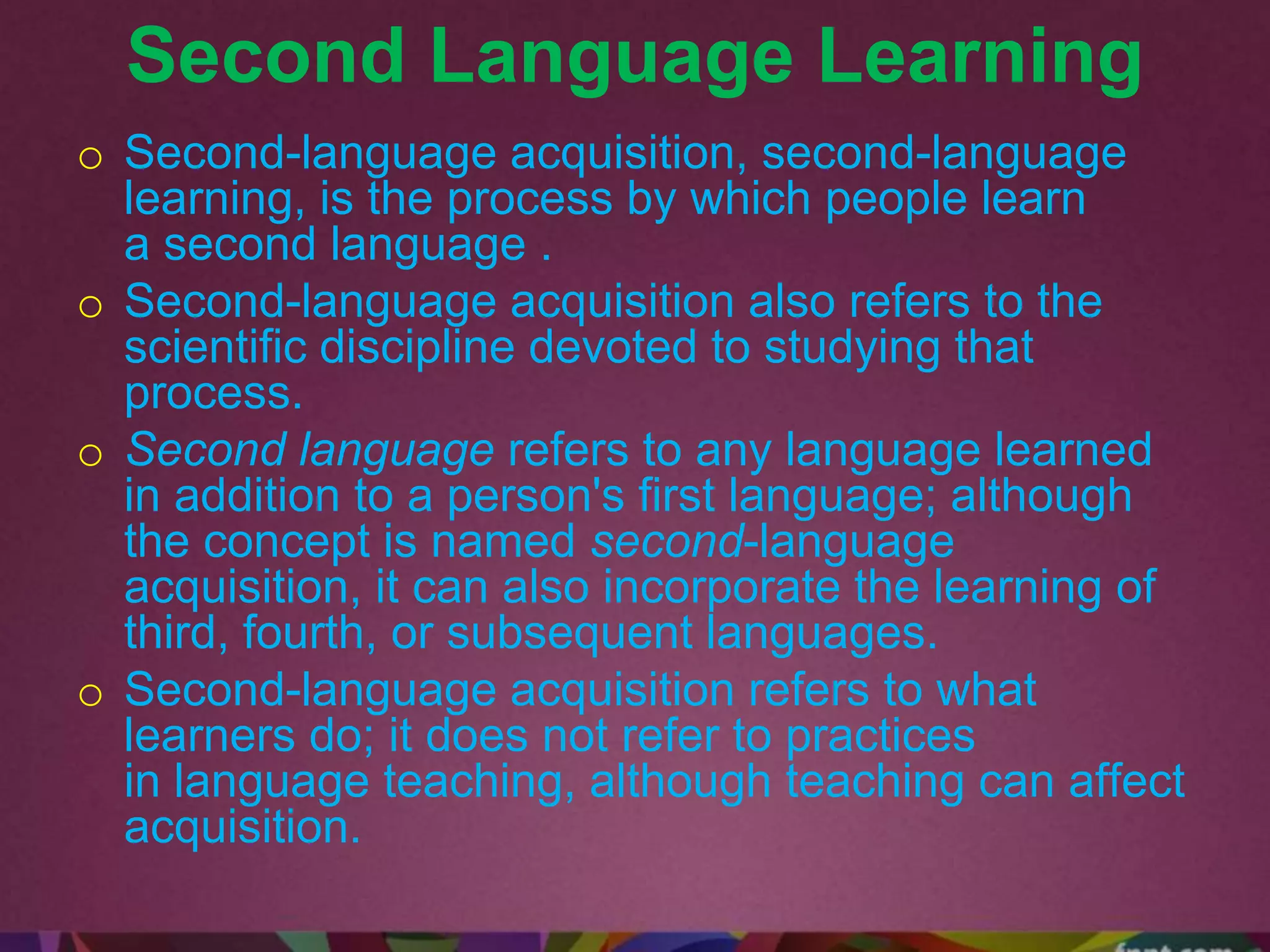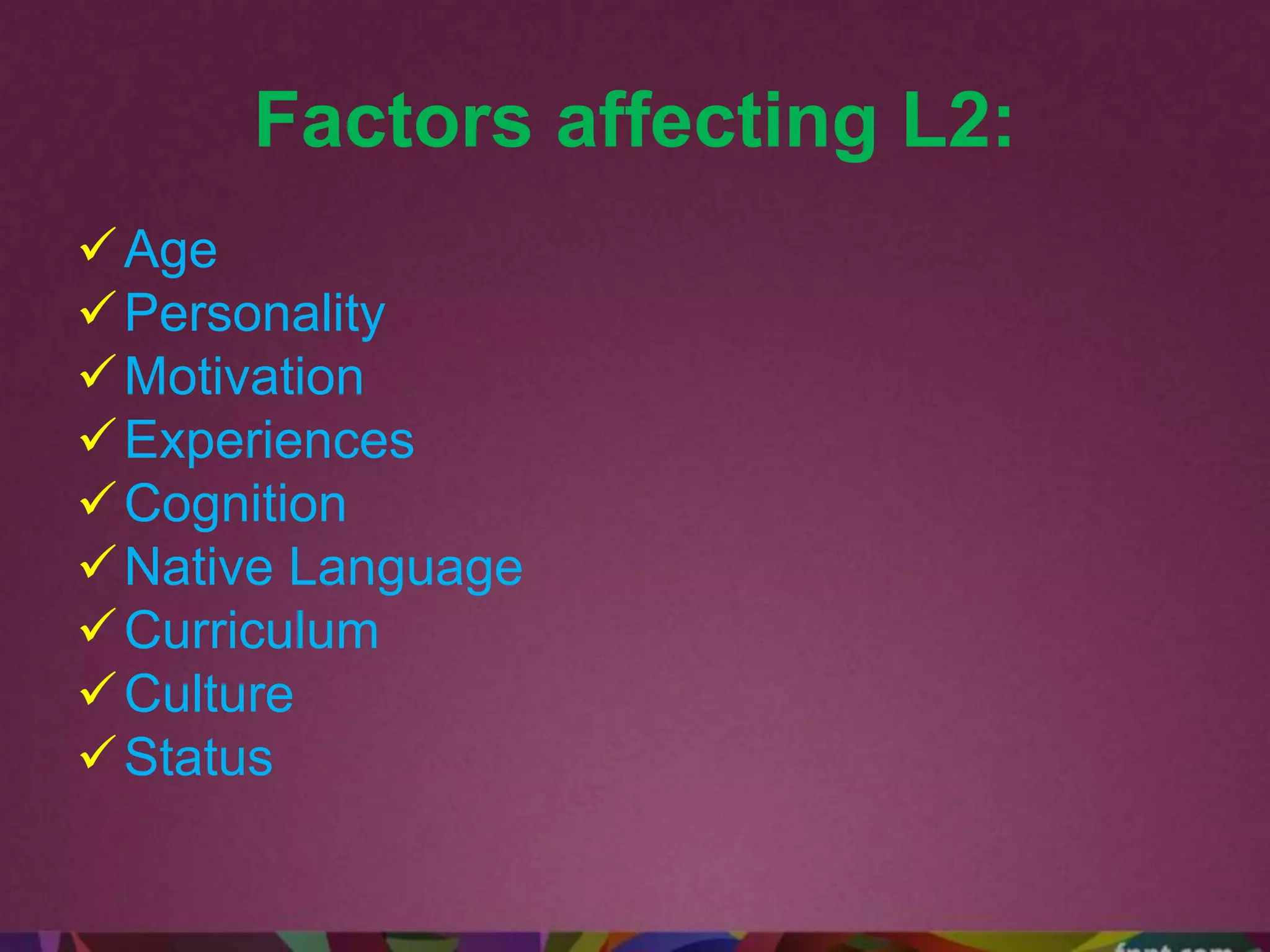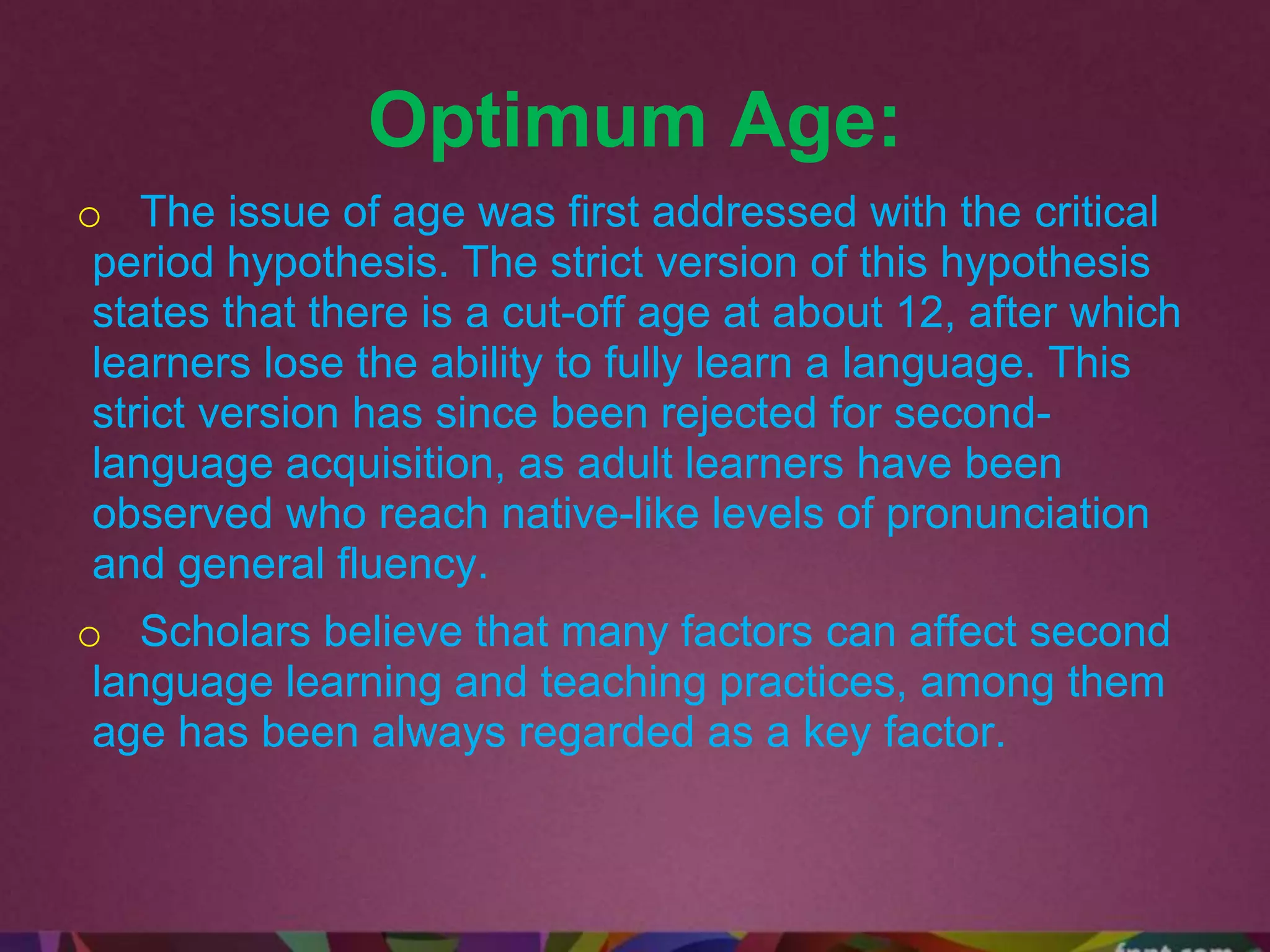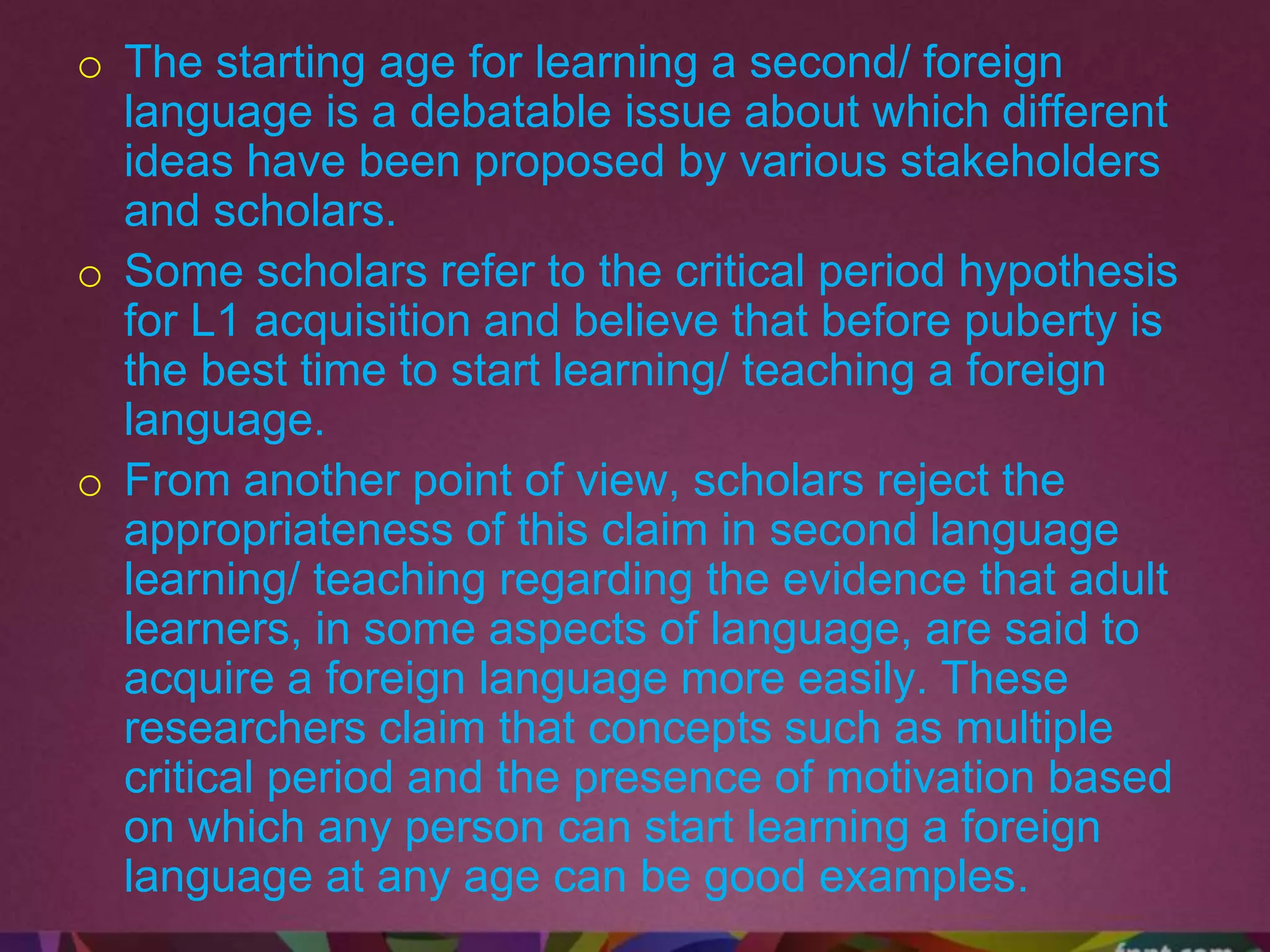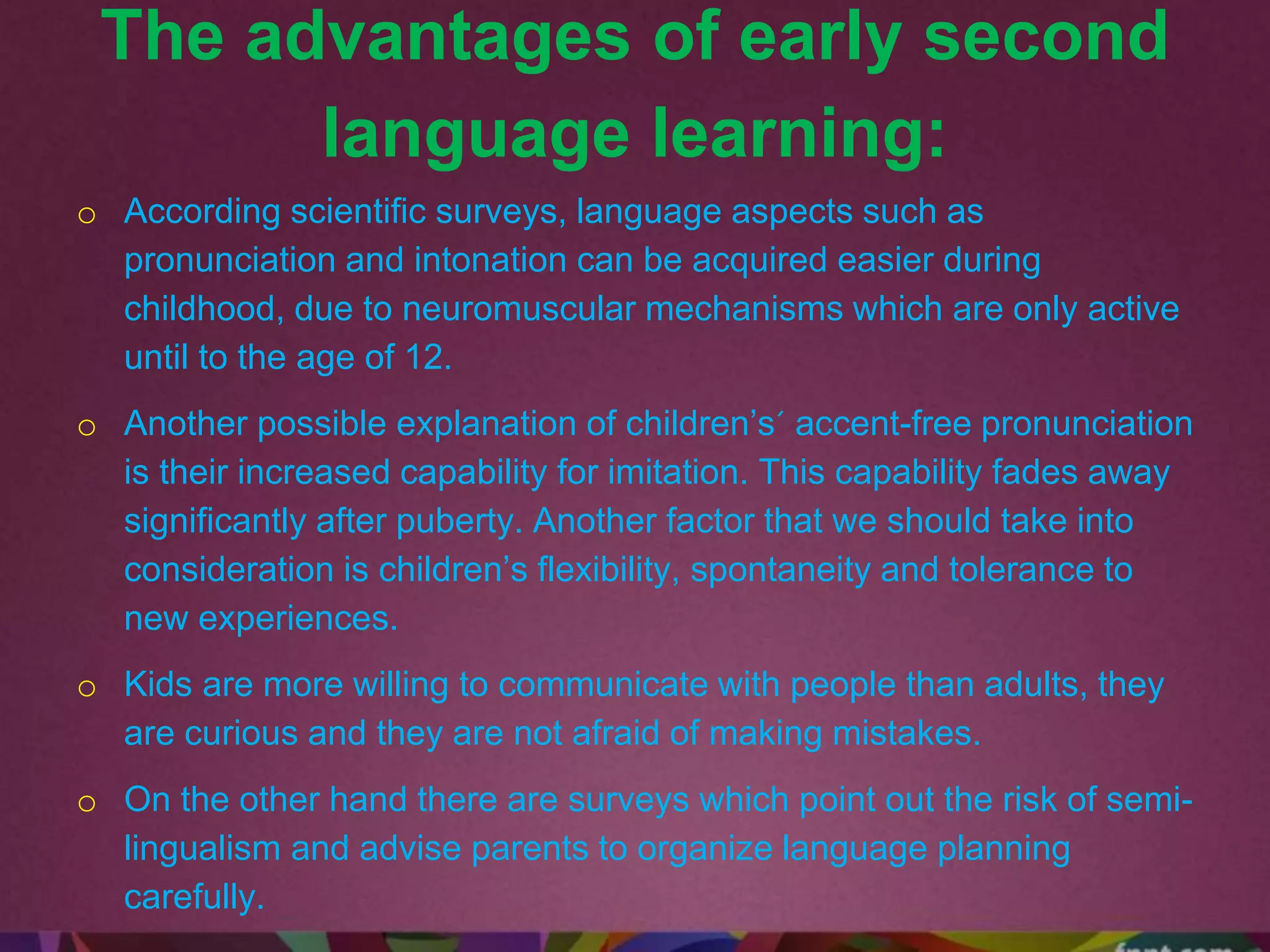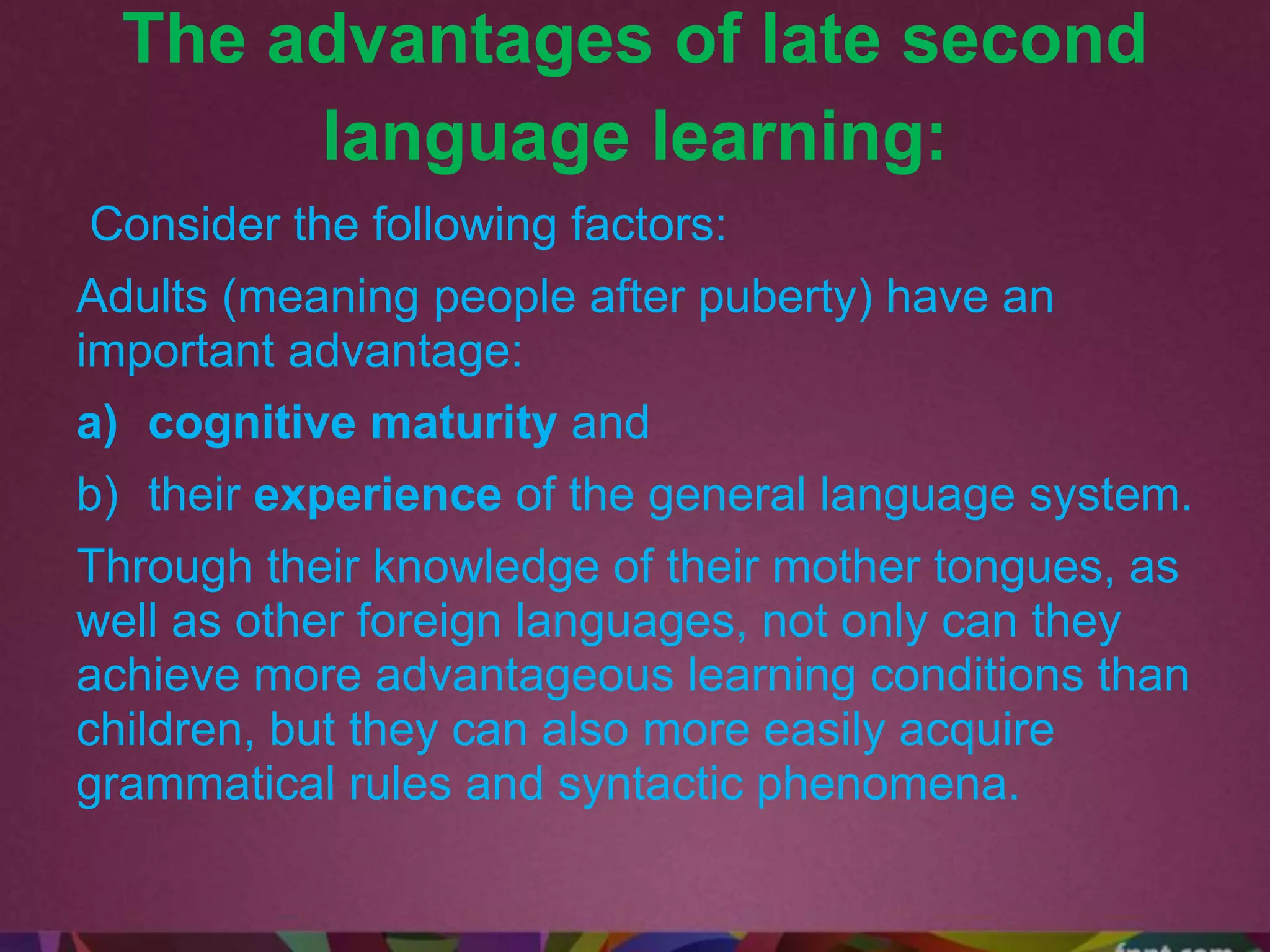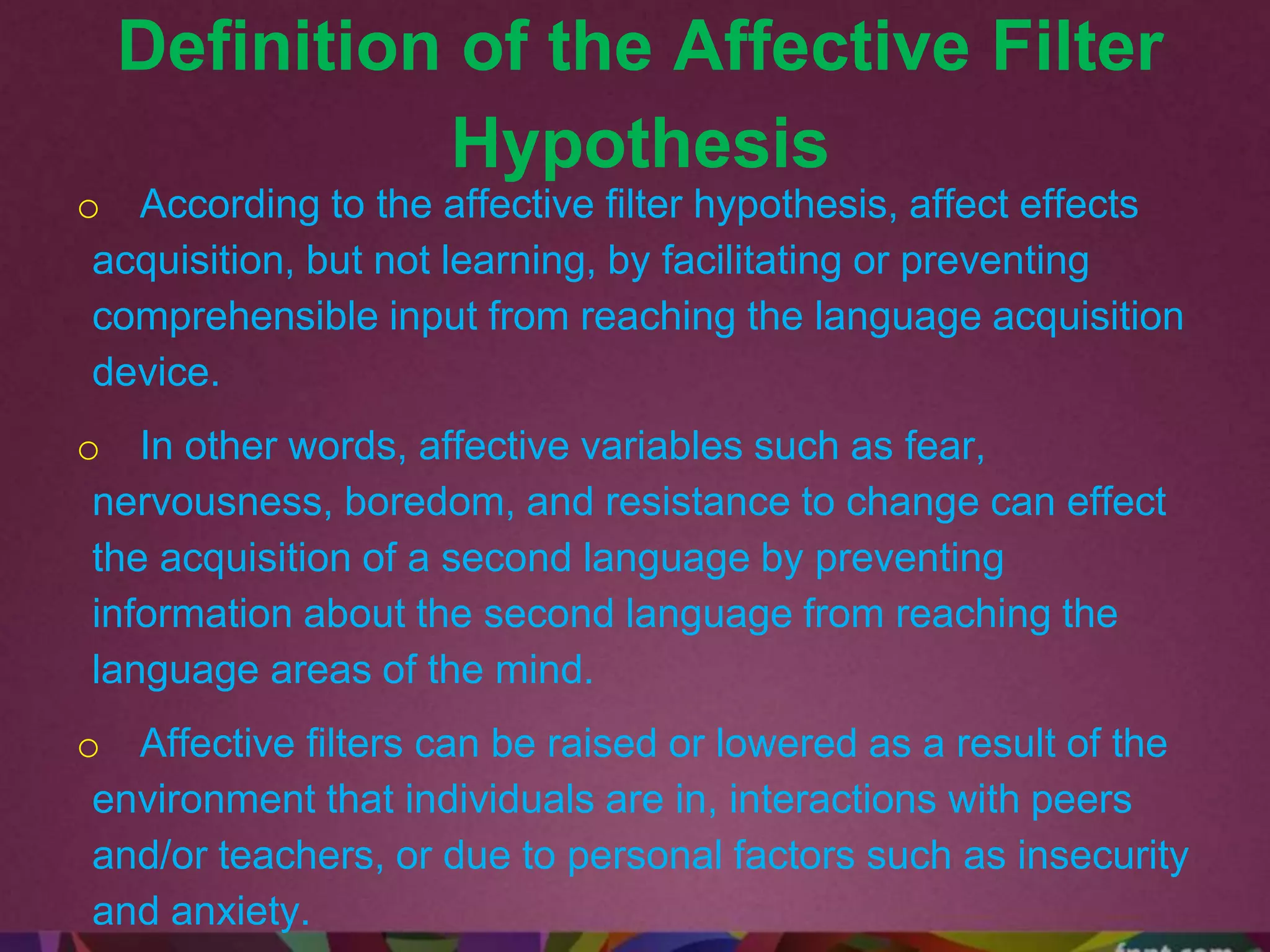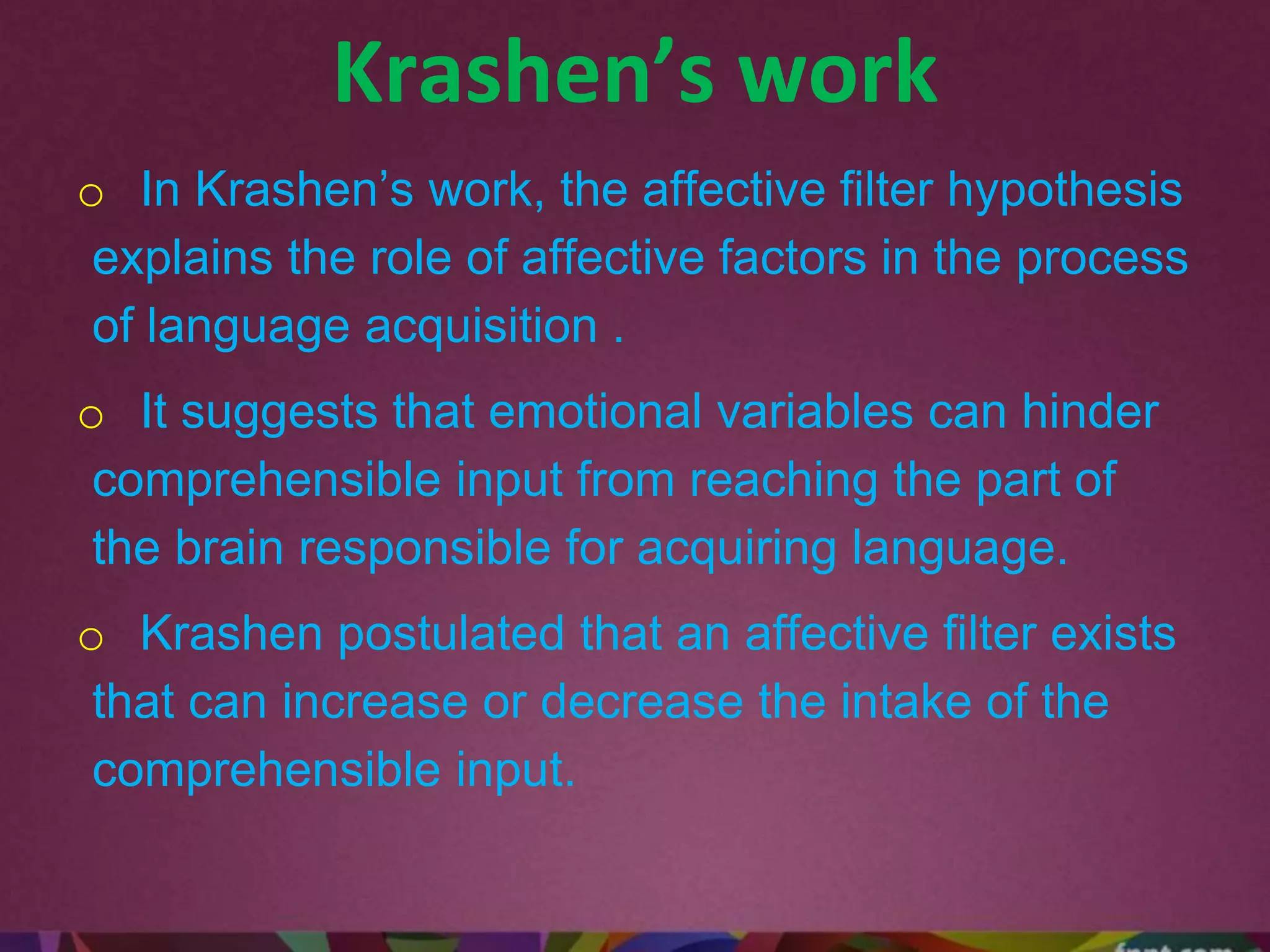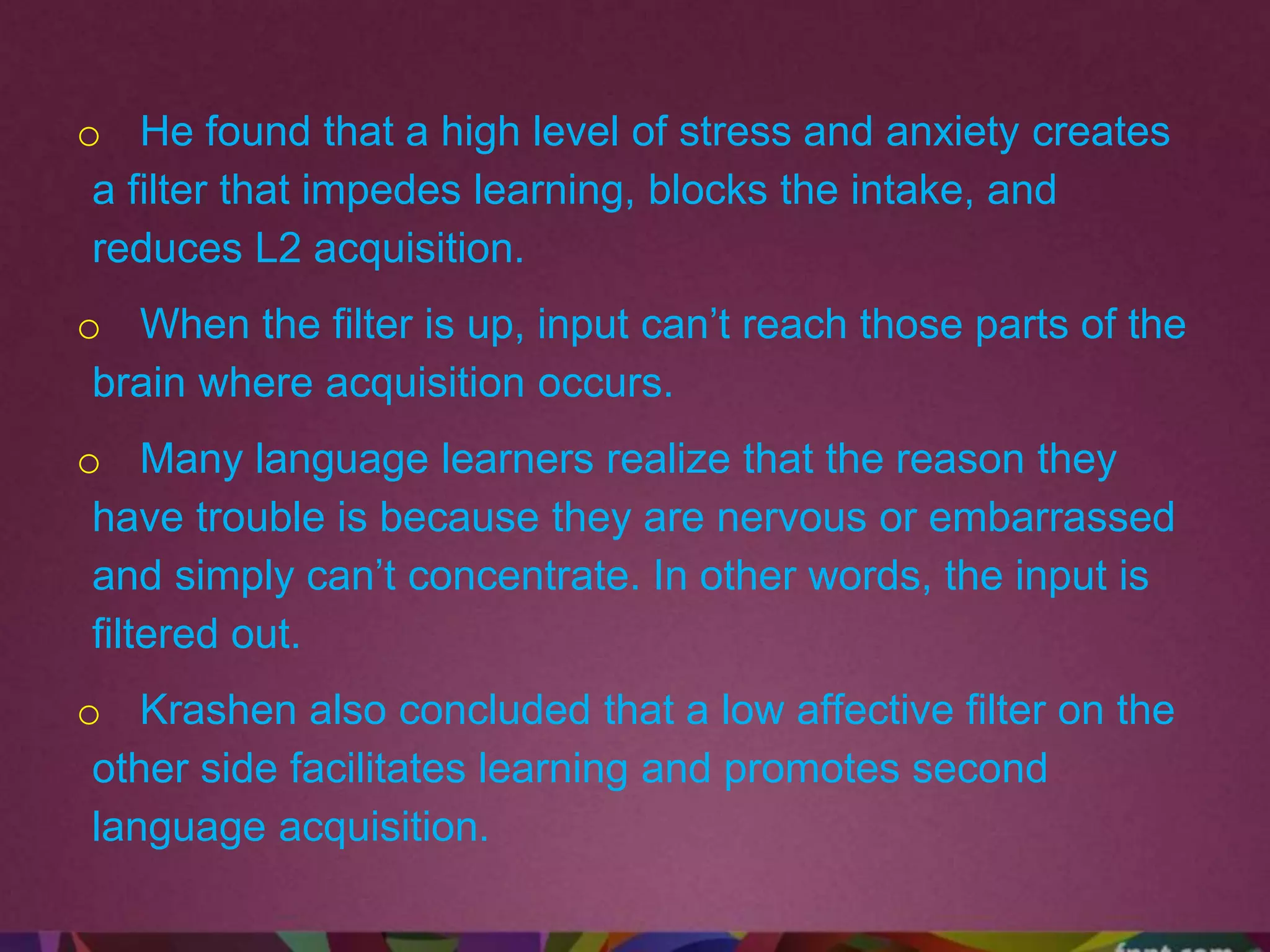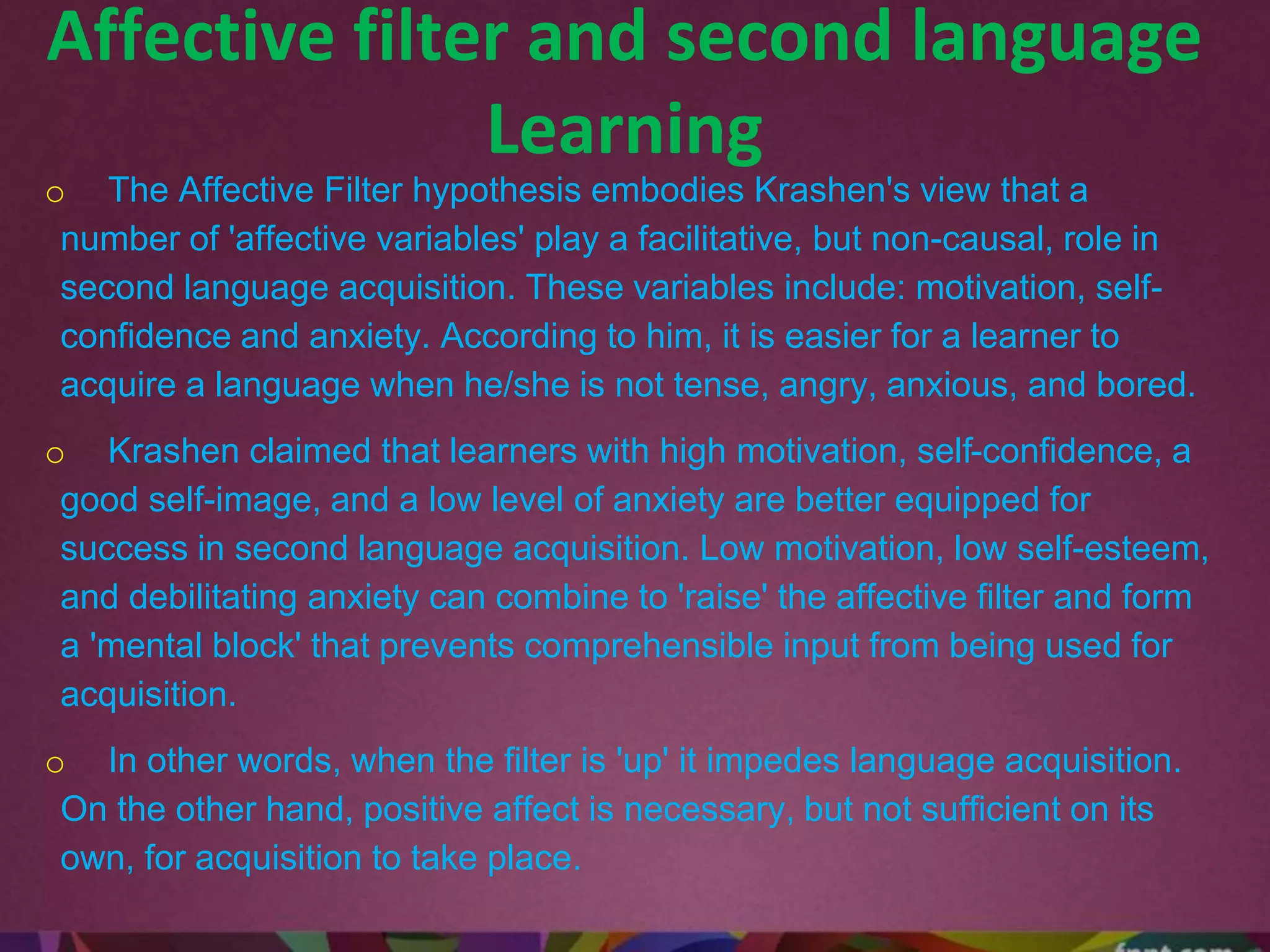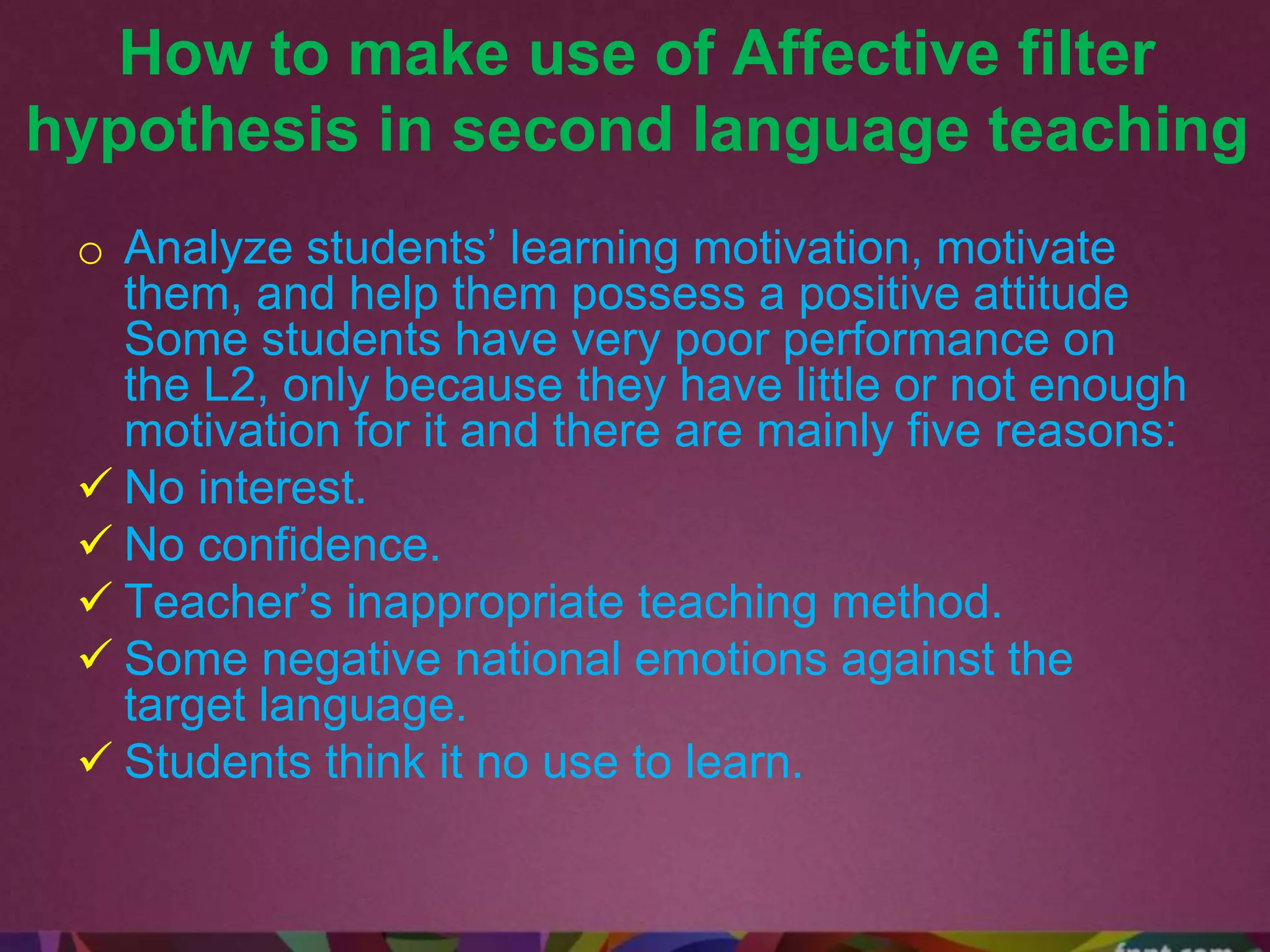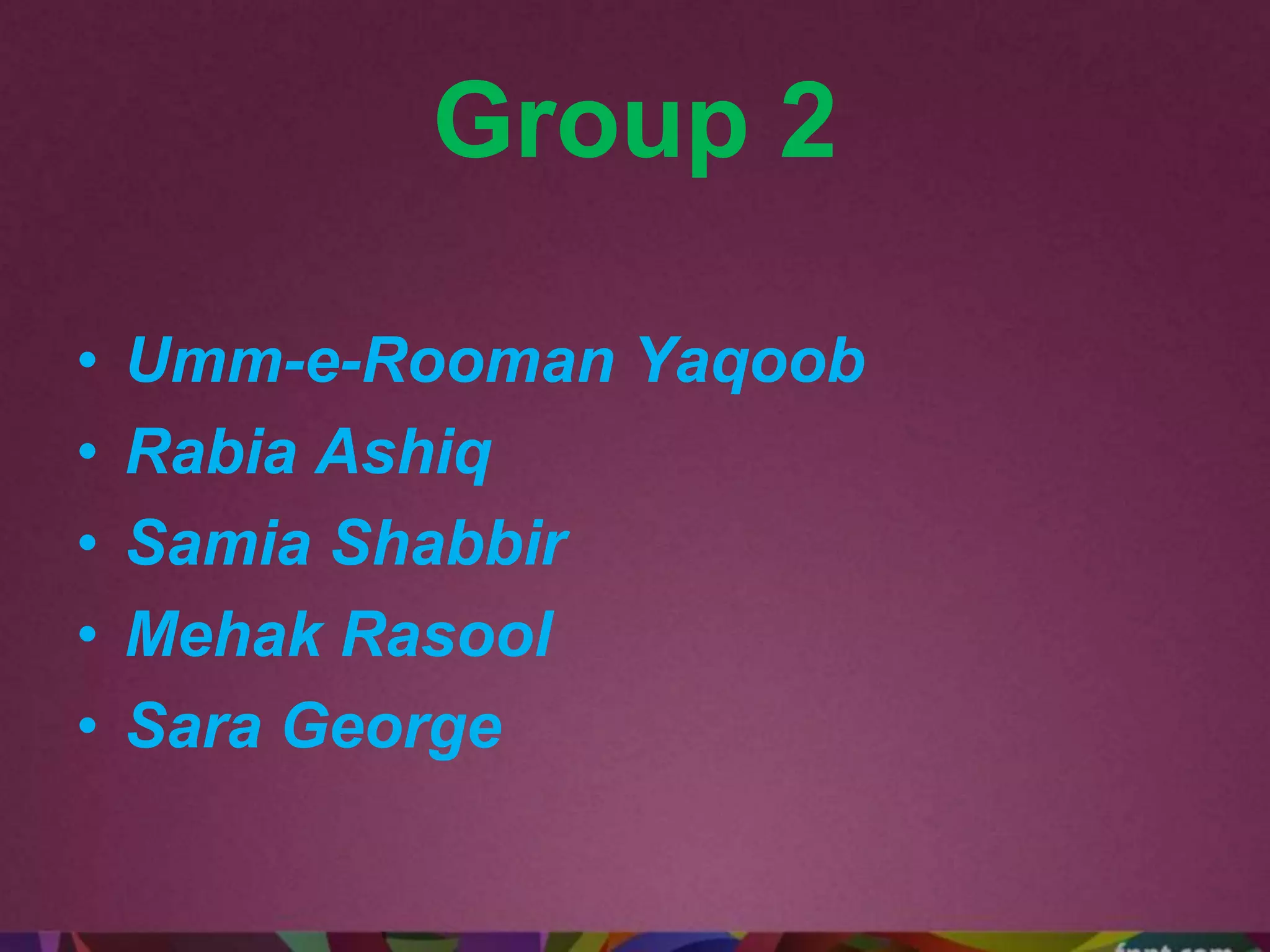The document discusses second language acquisition and factors that affect it. It defines second language learning as learning additional languages after one's first language. Key factors that influence second language learning include age, personality, motivation, experiences, cognition, native language, curriculum, culture, and status. While children may have an advantage in pronunciation, adults have cognitive maturity and experience with language systems that can help them learn grammatical rules more easily. The optimal age is considered to be early adolescence from 11-13 years old when motivation is high. The document also defines and discusses Krashen's affective filter hypothesis, which proposes that affective variables like anxiety and stress can prevent language input from being acquired, whereas a low affective filter facilitates learning
